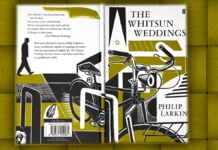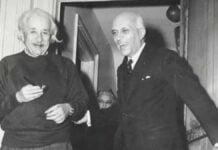Road literature, also known as travel literature or road trip literature, refers to a genre of writing that focuses on characters’ stories, experiences and adventures while journeying on the road. It typically involves narratives about exploring new places, encounters with diverse cultures and people, and self-discovery. The narrative usually follows a route filled with diverse experiences and characters, contrasting urban and rural spaces and exploring themes such as freedom, escapism, and the search for identity or meaning. The literal movement from one place to another often symbolizes a personal, psychological, or emotional journey.
Road literature can overlap with adventure, quest, and picaresque genres and is present in various formats such as novels, poems, memoirs, and songs. It offers a unique perspective on travel as it delves into the transformative power of the journey itself. This genre has gained popularity over the years, allowing readers to vicariously experience the thrill and freedom of embarking on a road trip through vivid descriptions and captivating storytelling. Readers can reflect on their lives and aspirations through the characters’ encounters and personal growth. This genre also allows for a deeper exploration of the human condition as the characters navigate various challenges and obstacles, ultimately finding a sense of purpose and fulfilment on the open road. Whether a physical or metaphorical journey, road trip literature can inspire and ignite a sense of wanderlust within its readers.
The importance and popularity of road literature as a genre can be attributed to its ability to capture the essence of freedom and adventure. It taps into the innate desire for exploration and the yearning to break free from the constraints of everyday life. Road trip literature offers an escape from the mundane and provides readers with a vicarious experience of embarking on a journey of self-discovery and personal growth. Its enduring appeal lies in its ability to transport readers to new and exciting landscapes, sparking their imagination and fueling their desire to hit the road themselves.
Road literature has a long and rich history, dating back to ancient epics such as The Odyssey and The Aeneid. In the 19th century, the genre flourished with works such as Herman Melville’s Moby Dick and Mark Twain’s Huckleberry Finn. In the 20th century, road literature became increasingly popular, with novels such as Jack Kerouac’s On the Road, John Steinbeck’s The Grapes of Wrath, and Cormac McCarthy’s The Road. Here are some examples of road literature from different cultures and periods:
- The Odyssey by Homer (8th century BC)
- The Aeneid by Virgil (1st century BC)
- Moby Dick by Herman Melville (1851)
- Huckleberry Finn by Mark Twain (1884)
- The Grapes of Wrath by John Steinbeck (1939)
- The Sheltering Sky by Paul Bowles (1949)
- On the Road by Jack Kerouac (1957)
- The Dharma Bums by Jack Kerouac (1958)
- The Hitchhiker’s Guide to the Galaxy by Douglas Adams (1979)
- Blue Highways by William Least Heat-Moon (1982)
- Like Water for Chocolate by Laura Esquivel (1989)
- The Motorcycle Diaries by Ernesto “Che” Guevara (1993)
- The Road by Cormac McCarthy (2006)
These works, and others like them, often explore the physical and emotional landscapes encountered during travel, the people who met along the way, and the personal growth and transformation that can occur through such journeys. Road literature can provide readers with insights into the human condition, the search for meaning, and the connection between physical and metaphysical exploration.
Characteristics of Road Literature
- Constant movement and journey as a central theme -the protagonist’s personal growth and self-discovery through their travels
- Exploring different landscapes and cultures providing a broader understanding of the world
- The challenges and obstacles faced on the road reflecting the struggles and triumphs of life itself
- The sense of freedom and liberation that comes with travelling and experiencing new places
- The reflection on the human condition and the search for meaning and purpose in life
Through travel, individuals can step outside their comfort zones and confront their fears and limitations, leading to greater self-awareness and empowerment. The process of exploring new landscapes and cultures allows for a deeper understanding of one’s own identity and values, as well as a recognition of the interconnectedness of all human beings. In this way, travel becomes not just a physical journey but a transformative and enlightening experience that shapes the individual’s sense of self and purpose in life.
Encounters with diverse landscapes, people, and cultures open the mind to new perspectives and challenge preconceived notions. It encourages personal growth by pushing individuals out of their comfort zones and forcing them to adapt to unfamiliar situations. Through these encounters, individuals gain a broader understanding of the world and their place within it, fostering a sense of empathy and compassion towards others. Overall, travel acts as a catalyst for personal development and self-discovery, allowing individuals to become more self-aware, confident, and empowered in their own lives.
Themes Explored in Road Literature
One of the prominent themes explored in road literature is the quest for freedom and escape from societal norms. This theme is often depicted through characters who embark on a journey to break free from the constraints of their everyday lives and seek a life of their choosing. Through their encounters and experiences on the road, they challenge societal expectations and find solace in the freedom of the open road. This theme resonates with readers who may also yearn for liberation from the pressures and expectations of society, inspiring them to question their own lives and seek their path to freedom.
As the characters navigate different landscapes and interact with diverse individuals, they question the conventional norms and values that society imposes upon them. The open road becomes a canvas for self-discovery and introspection, leading them to contemplate their existence’s more profound meaning and what truly fulfils them. In this pursuit, they find that the true purpose of life lies in pursuing their passions and embracing the authenticity of their desires. This reflection on the meaning of life and finding purpose resonates with the characters in the story. It strikes a chord with readers on a quest for personal fulfilment and self-actualization.
Transformation and self-realization through the road journey become prominent themes in the narrative. As the characters embark on their road journey, they are physically moving from one place to another and undergoing a profound internal transformation. Through their challenges and adventures, they learn to confront their fears, break free from societal expectations, and embrace their true selves. This journey becomes a metaphor for the larger life quest, where individuals must navigate through obstacles and self-discovery to find their purpose and fulfilment. Whether facing their insecurities or discovering hidden talents, the characters’ journey inspires readers to embark on their path of self-realization and embrace the transformative power of personal growth.
Escape
Road narratives often feature characters escaping from something, such as a complicated past, a mundane life, or a repressive society. The journey is often seen as a way to start fresh and create a new life.
Self-discovery
Road narratives often explore the characters’ inner journeys as they travel. The characters learn more about themselves, their strengths and weaknesses, and their place in the world.
Freedom
The open road is often seen as a symbol of freedom. Road narratives often explore the characters’ search for freedom, both physical and emotional.
Community
Road narratives often feature characters who form strong bonds with the people they meet. These bonds can help the characters to overcome challenges and find support.
Nature
Road narratives are often set against the backdrop of the natural world. The characters’ interactions with nature can be both challenging and rewarding.
Symbolism and Motifs in Road Literature
In road literature, the road is often used as a powerful symbol for life’s journey, representing the twists and turns, the ups and downs, and the choices and challenges individuals face. Just as travellers on the road must navigate through various landscapes and encounters, so too must individuals navigate through the complexities and uncertainties of life. This metaphor highlights that life is not just about reaching a final destination but about the experiences and growth that occur along the way.
The vehicle in this metaphor represents how individuals navigate through life. It symbolizes the tools, resources, and skills individuals possess to overcome obstacles and make choices. The significance of the vehicle lies in the fact that it is a personal and individualized representation of one’s journey. Each person’s vehicle may differ, reflecting their unique circumstances, abilities, and aspirations. It reminds us that while we may not have control over external factors, we have the power to determine how we navigate through life’s challenges and make the most of our experiences.
Motifs of rest stops, gas stations, and roadside attractions can be seen throughout this symbolic journey. These stops symbolize the moments of pause and reflection we encounter. They remind us to take breaks, refuel, and appreciate our journey’s more minor, often overlooked aspects. Just as a road trip is not solely about reaching the final destination, life is not exclusively about achieving our goals but also about the joy and growth that occur during the process. These motifs encourage us to embrace the detours and unexpected moments that shape our narratives.
Music in Road Literature
Music plays a significant role in the genre of road literature. It often serves as a soundtrack to the journey and becomes a character in itself, shaping and reflecting the emotional landscape of the narrative. In some road narratives, characters listen to certain kinds of songs or genres that reflect their state of mind, culture, background, or the journey’s era, location, or spirit. Music evokes specific times and places, triggers memories, and enhances the mood or atmosphere.
Music is also presented as a theme or motif, influencing the narrative’s rhythms, structure, and language. Jack Kerouac’s use of jazz music in On the Road is an example. Characters resonate with the themes of freedom, rebellion, nostalgia, identity, movement, or longing often found in certain types of songs, like folk, rock, blues, country, or road trip anthems.
Others play or create music on their journey, making it part of the transformative, creative, or soul-searching process. It’s another way for characters to engage with the landscape, cultures, and experiences they encounter or express their thoughts, emotions, or identity. Music deepens the sensory and emotional dimension of the journey, infuses it with cultural or symbolic resonance, and enriches the storytelling in road literature.
Road Literature and Self-discovery
Road literature often serves as a powerful tool for self-discovery and personal growth. As characters embark on their journeys, they face challenges and obstacles that force them to confront their innermost fears and desires. Through their experiences, they can better understand themselves and the world around them. The road becomes a metaphorical path towards self-exploration, allowing characters to shed their old identities and embrace new ones. In this way, road literature entertains readers and encourages them to reflect on their own lives and embark on their journeys of self-discovery.
The transformation of characters through their experiences on the road can be seen in many classic works of road literature. Take, for example, Jack Kerouac’s On the Road, where the protagonist, Sal Paradise, embarks on a cross-country journey that ultimately leads to his personal growth and self-realization. Similarly, in J R R Tolkien’s The Lord of the Rings, Frodo Baggins and his companions undergo a transformative journey as they travel through Middle-Earth, facing countless challenges and dangers. These characters find courage and strength within themselves and develop a newfound understanding of the world and their place in it. The transformation of characters through their experiences on the road is a powerful reminder that life is a continuous journey of growth and discovery.
Road literature often captures the spirit of exploration and the sense of freedom that comes with travelling, and it can offer insights into the human condition and the world through the lens of the open road. It is a popular genre because it speaks to our universal human desire for adventure, freedom, and self-discovery.






























